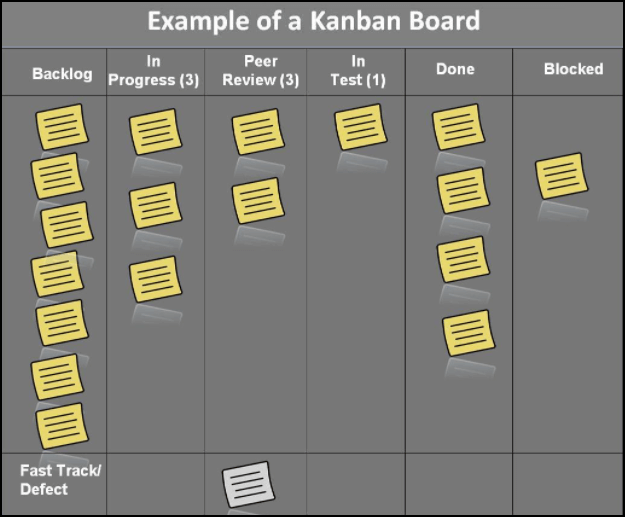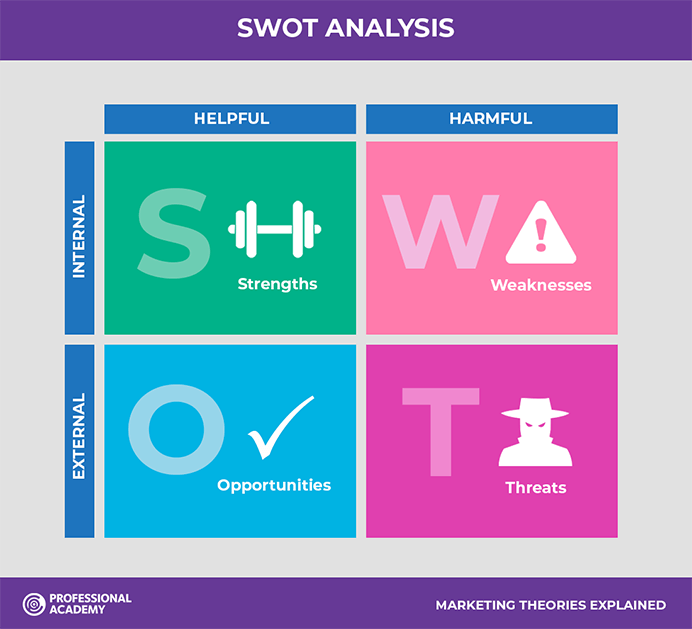When it comes to business, there are a lot of different aspects that need to be considered in order for a company to be successful. Of course, one of the most important is automation. Automating your business processes can offer countless benefits, which is why more and more businesses are turning to this technology, and it’s important not to be left behind.
In this blog post, we will discuss the 10 benefits of introducing business process automation in your business. We will also talk about how advances in technology make automation the future of business. Although some people may be hesitant to include automation in their work, the benefits make this a no-brainer.

What is Automation in Business?
Before we discuss the benefits of business process automation, let’s first look at what this term actually means. Automation in business is the use of technology to automate tasks that are generally done by humans. This can include anything from automating your email marketing to automating your accounting processes.
The reason businesses are turning to automation is because it offers several advantages over traditional methods of doing things. Many processes can be automated, which can give your business an edge over the competition.
Some of the most common include:
Sales Processes
When it comes to sales, there are several different processes that can be automated. This includes automating your lead capture process, automating your follow-up process, automating your sales process, and automating your order processing.
Marketing Processes
Marketing is another business process that can be automated. This includes automating your email marketing, social media marketing, and even your search engine optimization efforts.
Financial Processes
When it comes to finances, automation can help you automate everything from payroll processing to bookkeeping and accounting tasks. In addition to saving time by eliminating the need to do these tasks manually, automation can also help you save money by reducing the need for human resources.
Customer Service Processes
Another business process that can be automated is customer service. Automating these processes can improve response times, provide a better customer experience, and free up your workers so they can focus on more critical tasks.
HR Processes
When it comes to business, one of the most essential aspects is human resources. HR processes like vacation approval can be automated to save time and improve efficiency.
With business process automation, you can create a system where employees can submit vacation requests online. This will allow managers to review and approve requests quickly and easily.
In addition, automation can also be used to manage other HR tasks such as payroll, benefits, and training. By automating these processes, you can save time and improve the accuracy of your data.
Production Processes
Production processes can also be automated. This includes automating your manufacturing process, inventory management, and even shipping and receiving procedures.
Each of these processes can be automated to make them more efficient and reduce the chance of errors. Automating your business processes can save you time and money while improving your productivity.
Hiring Processes
When it comes to hiring, there are a number of business processes that can be automated. This includes automating your job application, recruiting, and even the interview process.
Automating your onboarding process can save you time and money. It can also help you ensure that all the steps are followed correctly and that all the required paperwork is completed. In addition, automating your onboarding process can help you better track employee progress and ensure that they are meeting your expectations.

What Are the Business Process Automation Benefits?
Doing things the same way you always have is only going to end up holding you back. The exception to this would be a secret family recipe that is the key to your restaurant’s success. Even in this case, there will be plenty of opportunities to automate processes to make things easier on your staff.
Let’s take a look at the key benefits you unlock when you start automating your processes.
It Saves You Time
One of the most significant business process automation advantages is the ability to save time. Automating your business processes can reduce or eliminate the need for workers to perform specific tasks, which means they will have more time on their hands and be able to focus on other aspects of their job. This will allow them to get more done in less time and increase productivity.
Automation also saves you from having to spend hours trying to figure out how something works or what needs doing next because everything has already been automated for you! You don’t need an expert – just someone with basic computer skills who knows some software basics (such as Excel). Not only does this mean that employees are freed up from repetitive tasks, it means that business processes are more reliable as they’re less likely to go wrong.
It Reduces Your Costs
In addition to saving time, another business process automation benefit also helps you reduce costs. For example, automating your business processes can help you save on labor costs by eliminating the need for workers to perform menial tasks.
Automation also improves productivity and efficiency because everything has been automated, so there’s less room for error (which saves money!) Automating business processes reduces or eliminates the need for human resources. Workers don’t have to spend their time doing things that machines could easily do better, like filling out forms or making copies of documents so they can focus more on critical work.
It Improves Overall Productivity
The benefits offered by business process automation are not limited to just saving time and reducing costs; it also improves overall productivity in your business. A more productive company can deliver better results in a shorter timeframe for its clients.
When it comes to business, nothing is more important than productivity. The more productive your business is, the more sales you’ll make. And business process automation is one of the best ways to boost your overall productivity. Suppose you’re trying to grow your business and make more money. In that case, automation unlocks more productivity to help you reach your goals.
It Makes Document Management Easier
Document management systems are used by all businesses. Still, it’s often hard to keep track of them manually as well as hire new staff members specifically just manage these types of things efficiently enough; this is where business process automation steps in.
Automating your document management processes can make it much easier to keep track of everything and improve the overall efficiency and productivity of your business. Automated systems help employees manage documents easily and quickly, improving customer service and compliance in the process!

It Allows for Greater Flexibility
In order to be successful in today’s business world, you need to be able to adapt quickly to changes. Business process automation allows you to do just that by giving you greater flexibility when it comes to changing your business processes on the fly.
When things change (and they always do!), you’ll be able to adapt more quickly and efficiently because everything has already been automated. Automating business processes gives you greater flexibility as well.
For example, suppose something unexpected comes up, such as your manager asking for a rundown of recent sales. In that case, you can automate the report to have the information prepared in a second.
It Frees Up Your Workers for More Important Work
When business processes are automated, it frees up your workers from doing repetitive tasks so they can focus on more important work.
For instance, when a business is automating its document management system, it could mean that employees no longer need to spend their time filling out forms or making copies of documents.
It Improves Customer Service Management
Automating business processes can also improve customer service management. Customer service is a vital part of business operations, and it can easily get overwhelmed if demand increases.
Businesses can use chatbots to automate customer service by choosing the best chatbot agency for automated customer service. Chatbots are computer programs that can mimic human conversation. They can be used to answer customer questions, take orders, and more.
Chatbots are a great way to automate customer service because they can handle a large number of inquiries at once. They can also help businesses improve their customer service by providing customers with faster, more accurate answers.
Businesses that use chatbots for customer service will see a significant increase in efficiency and productivity. Chatbots are a cost-effective way to handle customer service, and they allow businesses to focus on more important tasks.

It Provides Better Compliance
An important business process automation advantage is that it allows businesses to comply with regulations and standards more easily.
When business processes are automated, it makes them easier to track and manage. Automated systems help businesses keep track of changes and make sure that they are compliant with all relevant regulations at all times. This can save your business time and money in the long run!
Penalties for noncompliance can be severe and range from a slap on the wrist to shutting down an entire business. In some cases, companies can be fined for not complying with regulations, and in extreme cases, individuals can be prosecuted.
It’s essential to make sure that your business is compliant with all relevant regulations and standards, and business process automation can help you do just that. Automated systems make it easier to track and manage compliance. They help businesses keep track of changes so that they are always compliant.
It Provides Standardization of Processes
Automated business processes are standardized. Work will always be done the same way when automated, which is excellent for tedious tasks that take up too much time.
This standardization makes it easier for your business to scale up and down and transfer work between departments or locations. It also allows business managers to monitor the performance of their employees effectively by tracking how long each task takes on average (and if there is room for improvement).
It Reduces Errors
Business process automation reduces errors because computers don’t get things wrong.
Automating business processes can reduce human error in several ways: firstly, when a business uses an automated system instead of manually entering data into spreadsheets or other documents; secondly, when companies use software that automatically checks for mistakes before sending them out (for example), thirdly by reducing the chances that someone might make an error when they are doing a task that has been automated.
Human error is one of the biggest causes of business problems and can lead to lost money, time, and customers. Automated business processes can help reduce the chances of human error, which reduces the chance of business problems.

Improves Employee Happiness
When business processes are automated, it takes the load off of employees. It allows them to focus on more important tasks.
Employees often feel overwhelmed when they are asked to do too many things at once. Automating business processes can help reduce this feeling by allowing employees to focus on the tasks that they are good at. This can lead to happier and more productive employees.
In some cases, businesses have seen a decrease in employee turnover rates after automating their business processes. When employees know that their workload has been reduced, they are less likely to look for another job.
It Improves Communication
Communication is essential for business, and business process automation can help to improve communication between employees and departments. It can take a lot of time and effort to coordinate people between emails, phone calls, instant messenger, and in person.
When business processes are automated, it makes it easier for employees to share information with each other. This can lead to a more streamlined workflow and improved communication between team members. Using the same tools and automated processes between departments will keep everything progressing smoothly.
It Allows for Better Remote Working
Business process automation can help business owners to have better control over their business and employees. They will be able to track how much time each employee is spending on a task or project, which jobs they are working on currently, and what needs attention next.
It gives business owners peace of mind because they won’t need to worry about whether business processes are appropriately followed when some employees work from home.
This could lead to more flexibility for businesses with remote workers and those who need to manage team members located in different locations around the world without having any face-to-face contact whatsoever! It’s vital that even if you’re not physically present with your team, you still know exactly what’s going on at all times.

How to Implement Automation in Your Business
Now that you know all the excellent benefits of business process automation, it’s time to learn how to implement it in your business.
The first step is to identify the business processes that could be automated. This can be done by looking at the tasks that employees are currently doing and seeing if there is a way to automate them using software or computers.
If you’re not sure where to start, here are some standard business processes that can be automated:
- Data entry
- Customer service management
- Order processing
- Invoicing and bookkeeping
- Inventory management
- Human resources tasks (such as payroll)
- Social media marketing
Once you’ve identified the business processes that can be automated, it’s time to find the right tools for the job. Your tech stack will be the biggest asset you have when building automated processes.

What Automation Software Should You Use?
When looking for business process automation software, it’s essential to find a tool that will fit your needs. There are many different types of business process automation software available, so it’s important to find the right one for your business.
Some popular business process automation software includes:
- Microsoft Flow
- Zapier
- WorkflowMax
- ProcessMaker
Each of these tools offers different features, so it’s important to research which one will work best for your business. You may also want to consider hiring a consultant to help you choose the right business process automation software for your business.
If you need a tool to help facilitate your project management between your team, look no further than Teamly. It’s the complete project management tool that helps you finish projects in-house or remotely.
Conclusion
Business process automation is an important business tool that can help you grow your business. By automating business processes, it will free up time for you and your employees to focus on more critical tasks.
It also reduces the number of errors in business transactions as well as improves customer service management between departments within your organization.
In this article, we’ve covered the benefits of using business process automation, how to implement them into your business, and some tools that can help with this task. Business process automation has never been so easy!



































































